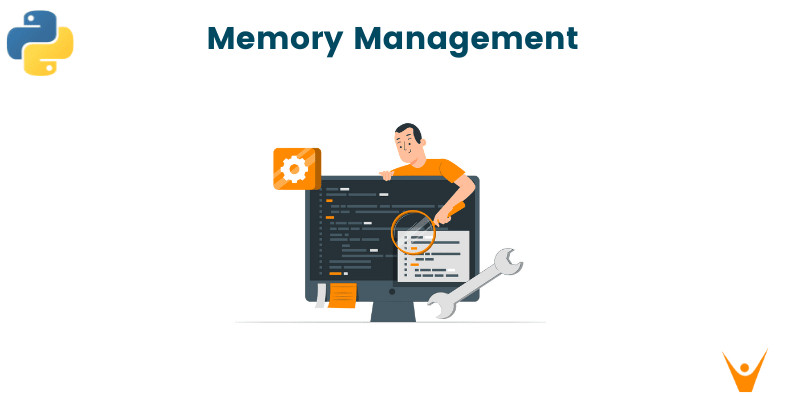Programming requires effective memory management, and Python includes its own memory management systems. In this article, we will examine Memory Management in Python in this article, covering memory allocation, different types of memory management, and the way memory is handled in Python lists.
How is Memory managed in Python?
Python's reference counting technique serves as the main method for managing memory. Python keeps track of the total amount of references pointing to each object by assigning a reference count to it. The object is instantly deallocated by the Python interpreter's garbage collector after the reference count drops to zero, at which point it is determined to be no longer required.
Note that memory management is primarily automatic, and you can't classify different types of memory management like in C or C++.
Here are some key aspects you should know:
- Automatic Memory Management: Python uses a garbage collector to automatically manage memory. This means you don't have to worry about allocating or deallocating memory manually like you do in lower-level languages like C or C++.
- Cyclic Garbage Collection: Python employs a cyclic garbage collector to deal with objects involved in circular references, where a group of objects reference each other but are not referenced by any other part of the program. The cyclic garbage collector identifies and collects these objects.
- Dynamic Typing: This allows variables to change their types during execution. This flexibility is achieved by associating type information with objects rather than variables. This dynamic typing mechanism adds a layer of complexity to memory management, as the interpreter must adapt to objects of different types.
- Reference Counting: Python uses reference counting to keep track of the number of references to an object. When an object's reference count drops to zero, it means the object is no longer in use, and Python's garbage collector can free the associated memory.
- Reusing Memory for Small Integers: Python reuses memory for small integers, often referred to as "interning." Small integers are commonly used in programs, and by reusing memory for frequently used integer values, Python can save memory.
- Manual Memory Management (ctypes): While not a primary way of managing memory in Python, the ctypes library allows you to interface with external libraries and perform manual memory management for specific use cases that require low-level memory operations. This is not the norm in Python and is typically used in specialized scenarios.
Memory Allocation in Python
The Python interpreter manages internal memory allocation for objects in Python. Memory is allotted from the interpreter's private heap when an object is formed. The heap is a section of memory used by the computer to manage and store items.
In order to accommodate the data for the object, heap space must be reserved as part of the memory allocation process. The type and structure of the object being formed determines how much memory will be allocated for it. Based on the lifecycle of the object, the Python interpreter manages this memory, including memory allocation and deallocation.
Here is an illustration of Python's memory allocation:
class Person: def __init__(self, name, age): self.name = name self.age = age # Create an instance of the Person class person1 = Person("Alice", 25) # Accessing attributes of the person1 object print(person1.name) # Output: Alice print(person1.age) # Output: 25
Output:
Alice
25
In the code above, we define the Person class, which has the attributes name and age. When we use the phrase person1 = Person("Alice", 25) to create a new instance of the Person class, memory is allocated onto the heap to store the object's data. The values "Alice" and 25, respectively, are assigned to the attribute's name and age.
Until it is no longer required or is no longer within its scope, the memory allotted for the person1 object is reserved. When an object's reference count drops to zero, indicating that it is currently no longer in use, Python's garbage collector allocates the memory automatically.
Conclusion
Overall, Python's memory management system, primarily based on automatic memory management with reference counting and garbage collection, is a key feature that makes Python an attractive language for developers.








